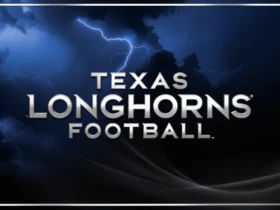
For many Texans, Texas football is a way of life. Football is a sport that represents passion, tradition, and community spirit throughout Texas, from high school fields to college stadiums and NFL arenas. This blog article examines Texas football’s illustrious past, notable teams, present-day tendencies, and promising future.
Texas football’s history
Early Beginnings
In the late 1800s, schools and universities hosted the first organized games of Texas football. The sport quickly gained popularity, leading to the formation of several leagues. The founding of the Texas Interscholastic League in 1910 formalized high school contests. This league developed into a fertile environment for neighborhood rivalries that would spark a sense of pride and camaraderie. The early years of Texas football created the groundwork for the sport’s eventual rise to fame as communities rallied around its teams and players. Football has shaped Texan identity throughout the years, impacting everything from regional customs to the state of the economy.
Key Milestones
Throughout its illustrious history, Texas football has had several turning points that have molded its terrain. The University of Texas Longhorns achieved a noteworthy milestone in 1963 when they won their first national title, which laid the stage for further success. In addition to its numerous national championships, Texas A&M University is known for producing illustrious football players who have left their mark in both collegiate and professional football. Not only have notable players like Johnny Manziel and Earl Campbell succeeded on the field, but they have also become symbols in Texas culture. Every year, a variety of activities and rituals commemorate these anniversaries, strengthening the enduring customs associated with Texas football.
Major Teams in Texas Football
College Football
- University of Texas Longhorns
The University of Texas Longhorns are among the most well-known collegiate football teams in the United States. They are well-known for their burnt orange hues and the “Hook ’em Horns” motion. Their lengthy history is chock-full of titles and outstanding players. The Longhorns have been among the best teams in the country for a long time, and their recent victories have stoked fan excitement once again. Massive crowds attend their home games at Darrell K. Royal-Texas Memorial Stadium, which creates an electrifying atmosphere that reflects the fervor of their fan base. The Longhorns are still one of the strongest teams in college football because of their emphasis on attracting elite players and dedication to success. - Texas A&M Aggies
The University of Texas Longhorns are among the most well-known collegiate football teams in the United States. They are well-known for their burnt orange hues and the “Hook ’em Horns” motion. Their lengthy history is chock-full of titles and outstanding players. The Longhorns have been among the best teams in the country for a long time, and their recent victories have stoked fan excitement once again. Massive crowds attend their home games at Darrell K. Royal-Texas Memorial Stadium, which creates an electrifying atmosphere that reflects the fervor of their fan base. The Longhorns are still one of the strongest teams in college football because of their emphasis on attracting elite players and dedication to success. - Other Notable Programs
Texas’s collegiate football scene is very competitive, thanks in large part to institutions like Texas Tech University, Baylor University, and Texas Christian University (TCU), in addition to Texas and Texas A&M. Every show has unique qualities and customs that attract devoted fans. For example, TCU’s recent achievements under head coach Gary Patterson have improved their standing on a national level, while Baylor has garnered attention due to their quick rise in recent years. In addition to engaging in intense competition, these programs are vital in recruiting and developing the next generation of athletes.
High school football
In Texas, high school football is a phenomenon that links communities throughout the state and goes beyond simple competitiveness. Large crowds attend Friday night games as families unite to cheer on their local teams. There is an undeniable passion for high school football, and in the days before games, communities frequently come alive with tailgating parties and pep rallies. College scouts closely monitor the state championship games at AT&T Stadium, as they are significant events that showcase exceptional talent from across Texas. These games are festivals of pride and communal spirit, not just competitive sports.
Furthermore, many high school athletic departments have produced gifted players who play university or professional sports. Coaches often emphasize the importance of hard work, discipline, and teamwork, values deeply embedded in Texan society. Distinctive venues, such as Choctaw Stadium in Arlington and Tim Buchanan Stadium in Aledo, give these events personality and make memories for both players and spectators.
Professional Football
The Dallas Cowboys and Houston Texans are two well-known NFL clubs that call Texas home. Many Super Bowl victories and a robust fan base have earned the Cowboys the title of “America’s Team.” Their recognizable blue star emblem, which represents not just a team but also a brand associated with achievement in professional sports, is well-known across the country. Major events at AT&T Stadium, home of the Cowboys, attract spectators from all over the nation, combining exciting football action with high-profile entertainment.
However, since their founding in 2002, the Houston Texans have marked a more recent chapter in the history of Texas professional football. They may not have the Cowboys’ success yet, but their fan base is ready for wins and playoffs. Fans at NRG Stadium, where they play home games, create an electrifying atmosphere in which they support their team no matter what. When combined, these two teams greatly boost local economies and represent the varied terrain of Texas’s professional football league.
Current Trends in Texas Football

Recruitment Strategies
Because so many high school players in the state want to play at a higher level, Texas is known as a football talent hotspot. During games and camps throughout the year, college schools constantly scout these young athletes, and as early as their sophomore year, they frequently send scholarship offers—a technique known as “early recruiting.” With social media networks enabling athletes to instantly share highlight reels with coaches throughout the country, this competitive attitude has become even more intense.
Program-specific recruitment tactics differ, but generally speaking, they entail in-depth assessments via video analysis and direct communication with participants’ families. In order to develop connections with coaches who can offer insights into potential recruits’ character and work ethic—qualities that are equally as critical as physical ability—coaches travel far around Texas to visit high schools. College recruiting is getting more and more competitive countrywide, so organizations that can spot potential early on will probably have an advantage over others.
Coaching Changes
Recent coaching changes across many teams have triggered conversations about team performance and future prospects within Texas football circles. For example, after years of patchy play on the field, supporters at the University of Texas are feeling more optimistic now that Steve Sarkisian has joined the team. His experience as a coach at elite institutions has given him confidence in player development tactics that maximize skill potential.
Inspired by his studies of other successful programs, Sarkisian’s plan focuses on depth within his squad. He wants starters to play a considerable amount of snaps while also developing backups who can step up when necessary. In the same vein, TCU and Baylor have brought in key personnel with the goal of reviving their programs following difficult campaigns or coaching changes. These modifications often lead to adjustments in recruitment priorities or playing styles, which can significantly impact the club’s success over time.
Technology in Training
Advanced analytics, virtual reality training aids, and biomechanical evaluations are examples of innovations that are quickly becoming routine procedures for texas football score teams across all divisions, from high schools to professional organizations like the NFL. These tools enhance player performance by providing coaches with insightful information about each player’s areas of strength and development.
For instance, during practice sessions, quarterbacks may virtually recreate game situations without exerting themselves physically—a vital benefit when getting ready for pivotal games against challenging opponents later in the season! Additionally, wearable technology allows coaches to measure players’ physical effort levels during practices or games, enabling them to optimize training plans specifically tailored to each athlete’s demands and preventing injuries.
The sports science sector is experiencing significant technological advancements. Coaches who adopt these advancements are likely to acquire a competitive advantage over those who fight change!
Rivalries and Their Impact
Historic Rivalries
Rivals are at the heart of Texas football culture, bringing excitement to every game and fostering community participation! The University of Texas Longhorns and the University of Oklahoma Sooners, two traditional powerhouses, engage in “The Red River Showdown,” a famous rivalry, every October during celebrations held at Cotton Bowl Stadium, halfway between both campuses. Fervent fans of both teams swarm the stadium, a neutral location!
This legendary rivalry has a rich history that spans more than a century and is characterized by intense competition and pride derived from each institution’s unique past! Other nearby institutions play in similarly fierce rivalries, including TCU vs. SMU. Their yearly showdown, known as “The Battle For The Iron Skillet,” garners a lot of attention because of how close the campuses are to one another, which increases the stakes! These rivalries not only increase the anticipation for individual games but also help to define local identities and leave a lasting impression on all parties involved!
Cultural Significance
These rivalries encourage community involvement by uniting individuals around common interests, forging enduring bonds among supporters! They frequently help to define local identities. For example, during the weeks leading up to kickoff, towns unite around their teams, turning entire neighborhoods into lively celebrations complete with tailgating events and food trucks serving delectable cuisine, as well as animated pep rallies meant to raise spirits before important games!
Additionally, these competitions provide a platform for showcasing up-and-coming talent from their respective regions and attract attention from scouts seeking to find future stars capable of making an impact at the college and professional levels! The state’s rivalries are still rife, and Texans are pleased to be supporters of their favorite teams, no matter how the game turns out!
The future of Texas football
Emerging Talent
With fresh talent emerging from high schools throughout this large state, Texas football appears to have a bright future! With so many prospects making waves even before they set foot on college campuses—including highly anticipated quarterbacks like Arch Manning’ enthusiasm for the forthcoming seasons is growing dramatically as they watch these young players blossom into celebrities!
The recruitment goal remains to find talented athletes early on. In order to attract coaches eager to fill roster positions for the upcoming season, many schools host camps where prospective athletes can gain exposure. Texas football schedule As more young talent progresses through the ranks, Texas’s image as a state that produces exceptional athletes capable of competing in both collegiate and professional settings only grows!
Changes in NCAA Regulations
The dynamics around collegiate athletics are changing as a result of recent revisions to NCAA laws regulating player eligibility transfers, including the recruitment tactics used by different institutions throughout the state! New regulations provide student-athletes more flexibility to transfer between universities without incurring fines; this change might have a big impact on how clubs construct rosters in the future!
Texas football schedule: Universities must manage the challenges of preserving team cohesion in the face of a yearly inflow of new players while also adjusting their strategy accordingly! In order to achieve long-term success, coaches must place a high priority on developing strong connections among players and ensuring that newcomers integrate seamlessly into established systems from previous seasons.
NIL (Name, Image, Likeness) has an impact.
The advent of NIL partnerships has changed the recruiting scene nationwide, even inside Texas’ boundaries, by enabling athletes to capitalize on their personal brands while continuing to compete collegiately. With this increased power, athletes can now make money from their social media presence through endorsements, collaborations, and brand leverage. Rising stars may now get market recognition!
Programs must modify their recruitment pitches to highlight the possible financial incentives for potential recruits who join their teams, since NIL opportunities are growing quickly! Successfully negotiating this shifting terrain will probably give their schools a competitive edge over rivals who find it difficult to keep up with the shifting winds impacting collegiate athletics as a whole!
Conclusion
Texas football is not just a game, but an integral part of daily life in towns across the state and a crucial aspect of the state’s identity! From professional stadiums hosting exciting contests showcasing elite-level skill to high school fields buzzing with action on Friday nights, the enthusiasm for this cherished sport connects people from all walks of life to celebrate shared love competition!
Looking ahead, this beloved activity will continue to define itself through evolving recruitment techniques, technological breakthroughs, and new talents, guaranteeing that legacy continues on for future generations! Whether you’re engaging in the rich tradition that makes Texan culture so distinctive or you’re just enjoying game day celebrations with friends and family, you’re cheering loudly! Also read this article.
Additional Resources
For more insights into texas football schedule:
- For updates on Longhorns, follow Inside Texas.
- For comprehensive coverage, check out Dave Campbell’s texas football schedule.
- Check out fan forums like 247 Sports for discussions on team performance recruiting news.
FAQs About Texas Football
What is Texas football known for?
Texas football is known for its passionate fan base, rich traditions, and competitive high school, college, and professional programs.
Which college teams are the most prominent in Texas football?
The University of Texas Longhorns and Texas A&M Aggies are the most prominent college teams, alongside Texas Tech, Baylor, and TCU.
How important is high school football in Texas?
High school football is vital in Texas, often serving as a community focal point and a pathway for athletes to college and professional levels.
What are some famous rivalries in Texas football?
Notable rivalries include the Red River Showdown (Texas vs. Oklahoma) and the rivalry between Texas A&M and Texas.
How does recruitment work in Texas football?
Recruitment involves scouting high school talent, often starting as early as a player’s sophomore year, with coaches visiting schools to evaluate athletes.
What impact do NIL deals have on Texas football?
NIL deals allow players to profit from their name, image, and likeness, significantly changing recruitment dynamics and athlete engagement.
What role does technology play in Texas football training?
Technology enhances training through analytics, virtual reality simulations, and wearable devices that monitor player performance and health.
What is the significance of Friday night games in Texas?
Friday night games are a cultural phenomenon in Texas, drawing large crowds and fostering community spirit around local high school teams.
How many NFL teams are based in Texas?
There are two NFL teams based in Texas: the Dallas Cowboys and the Houston Texans.
What is the future outlook for Texas football?
The future of Texas football looks promising with emerging talent, evolving coaching strategies, and increased focus on technology and player welfare.
Call to Action
Which Texas football-related memories or situations stand out to you the most? Post your ideas in the comments section below! Your experiences that highlight the importance of this beloved sport would be wonderful to hear!


















Leave a Reply